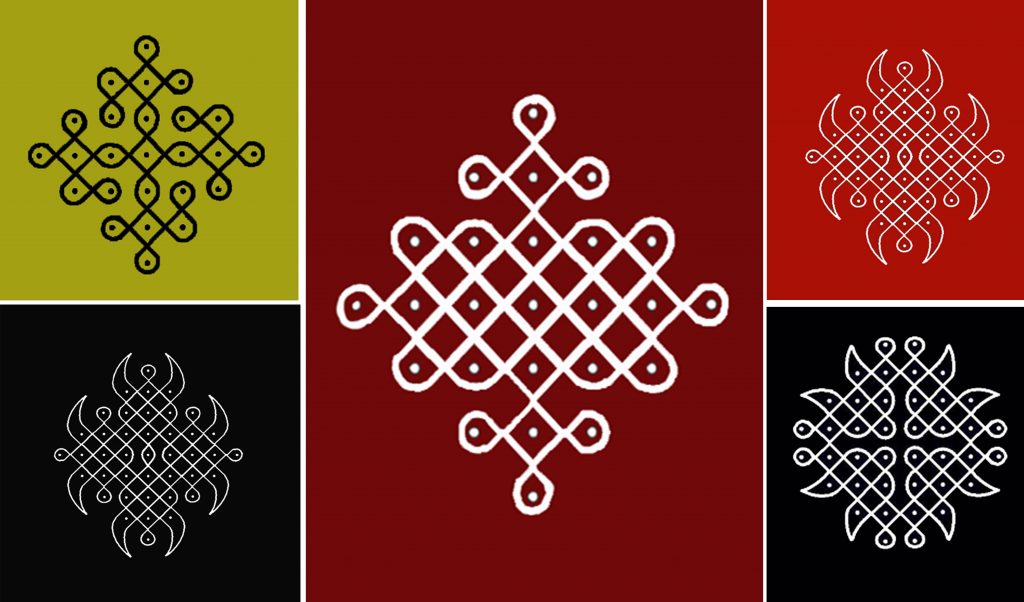Somewhere in 2011, Pearl of Beadinggem wrote a post on celtic and Viking motifs. I left a comment on that stating the fact that the celtic knot is a common motif used in Indian embroidery. Soon a discussion started, that run into multiple mails and I eventually told her that I would write a post on it. Finally after all this time, here it is.
Celtic knot is a compliation of a variety of knots and stylized graphical representations of knots used for decoration, used extensively in the Celtic style of Insular art. They are also referred to as the mystic knot, or the endless knot or infinity knot.You can find them as ornamentation in Christian monuments and manuscripts. The knot pattern is said to appear around 3-4th century A. In modern times Celtic Art is popularly thought of as Irish, Scottish or Welsh.

I once did a college project on celtic knots, where I found the motif was used in Indian Kutch Embroidery. Many years later an artist who was working on a similar project told me that, when the celtic traders travelled to Indian shores in the 16-17th century, they brought the motif with them. Most of them settled here and married into the local community and spread the art. Some also say that it was brought into Kutch from Sindh by Muslim Jats. I am not sure which one of them is true, but it is incredible to see a completely different interpretation of the motif.

But Being a south Indian who grew up drawing kolam, I know that the beginning of the knots, especially Eternity knots is in Vedic Hinduism. The Srivatsaangam knot, an auspicious symbol on Lord Vishnu chest, Signifying his consort, Maha Lakshmi – The Goddess of wealth is sometimes denoted by this symbol. In Tamil we sometimes refer to this motif as “Marma mudichu” or the mysterious (mystic) knot. It also believed that these lines trace the path of the divine. This is often used in Pulli Kolam (or art based on a dot grid. This signifies the eternal cycle of life and death. We draw it out of rice flour or chalk powder and use it as decorations on the ground in front of our houses and even inside the house during festivals. Each festival and each day of the week has a distinct kolam.

Other forms of kolams are rangoli (with colors), Maa kolam (with a wet paste) and Kambi kolam (using lines and geometrical shapes)Do notice the similarity between these shapes and the celtic knot. The kolam pattern is often the base for the kutch work as shown above. The exact origin of kolams is unknown – maybe thousands even millions of years.The beauty of this motif is that it lends itself well to Jewelry – especially wire jewelry. It is one of my favourite motifs and I use it all the time.



Such versatile motifs like the endless knot show that life with Design is like eternal love – always present yet constantly evolving!!I hope you found this post interesting
Cheers


